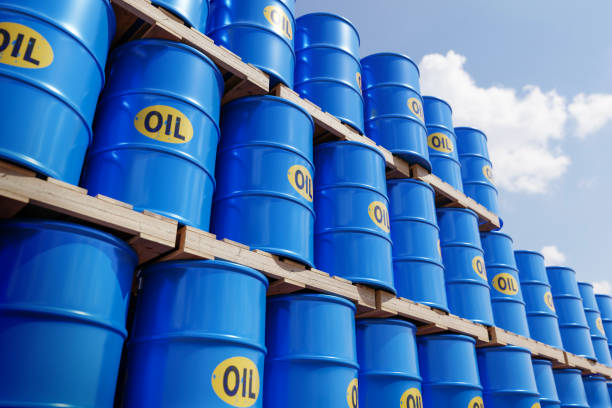Oil markets extended gains for a fourth consecutive session Monday morning as traders responded to signals from major producers that supply increases will pause through early next year.
Brent crude rose to 65.14 dollars per barrel during early Asian trading, climbing 0.57 percent from the previous closing price. The Organization of the Petroleum Exporting Countries and its allies, collectively known as OPEC Plus, announced Sunday it would implement a modest December production boost before freezing further increases until April.
Eight key member nations including Saudi Arabia, Russia, Iraq, the United Arab Emirates, Kuwait, Kazakhstan, Algeria and Oman agreed to raise output by 137,000 barrels daily in December. This matches increases implemented in October and November as the group gradually unwinds voluntary cuts imposed over the past two years. However, the producers decided to suspend additional hikes throughout January, February and March next year.
The pause reflects expectations of weaker seasonal demand during the first quarter, which historically represents the slowest period for global oil consumption. Since April, these eight countries have collectively increased their production targets by approximately 2.9 million barrels per day, representing roughly 2.7 percent of worldwide crude supply. The group emphasized its commitment to adopting a cautious approach while retaining flexibility to reverse adjustments if market conditions warrant.
Market analysts note the decision helps address mounting concerns about potential oversupply in early 2026. The International Energy Agency projects global demand will increase by only 700,000 barrels daily next year, potentially creating a surplus of four million barrels per day. Meanwhile, OPEC forecasts demand growth of 1.38 million barrels daily, suggesting a more balanced market. Independent analysts generally estimate surpluses closer to 1.6 million barrels per day.
Oil prices also drew support from escalating risks to Russian export flows. The United States imposed sanctions on October 22 targeting energy giants Rosneft and Lukoil, Russia’s two largest oil producers. The United Kingdom followed with parallel measures on October 15. These designations mark the first major Russian oil sanctions under the Trump administration and give Washington sweeping authority to pressure the companies’ overseas operations.
The sanctions require foreign partners to wind down transactions by November 21, potentially disrupting flows to major buyers including India and China. Rosneft pumps approximately 5.2 million barrels daily, accounting for roughly 40 percent of Russian total output, while Lukoil produces around 1.6 million barrels. The measures aim to deprive Moscow of oil revenues financing military operations in Ukraine.
Ukrainian drone strikes targeting Russian energy infrastructure have compounded supply concerns. Over the weekend, drones struck an oil terminal and tanker in the Black Sea port of Tuapse, triggering fires at loading facilities. A source within Ukraine’s Security Service confirmed five drone strikes hit the terminal, disabling at least four loading piers and damaging port buildings. The Tuapse facility, operated by Rosneft, serves as a vital export hub with capacity to handle seven million tons of petroleum products annually.
Russian authorities acknowledged damage to two foreign vessels and terminal infrastructure but reported no casualties among crew members. The attack forced temporary closure of numerous airports across southern and western Russia. Ukrainian forces have systematically targeted Russian oil refineries, depots and pipelines throughout 2025 in efforts to undermine fuel supplies supporting military operations.
Despite Monday’s advance, Brent prices remain approximately 0.89 percent lower over the past month and roughly 11.4 percent below levels from one year ago. The modest recovery highlights fragile market sentiment amid competing pressures from supply constraints and demand uncertainty, particularly regarding consumption trends in China.
West Texas Intermediate, the American crude benchmark, traded at 61.33 dollars per barrel Monday morning, up 0.57 percent from the previous close. The full OPEC Plus alliance is scheduled to convene November 30 to review production policies for 2026. Market observers suggest the early pause on increases could establish firmer price floors heading into next year, though sustained recovery remains dependent on demand strength and geopolitical developments.



